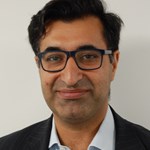Book an ingrowing toenail removal consultation
It's easy to book online or by giving us a call.
If it’s not treated, an ingrowing toenail may become infected. To prevent this you should; wash your feet regularly to keep the area clean, change socks frequently, wear properly fitting shoes, and cut your nails correctly.


Consultant Orthopaedic Surgeon
Mr Southgate's specialities include foot and ankle conditions - covering sports injuries and more.

Consultant Orthopaedic Surgeon
Mr Dunning's specialities include hallux valgus surgery, sports injuries of the foot and ankle and arthrodesis surgery.

Sports Medicine Podiatrist
Mr Stapleton's specialties include minor surgical procedures, sports injuries, MSK podiatry and Ultrasound imaging.

Consultant Podiatric Surgeon
Mr Macfarlane's specialties include bunions, osteoarthritis of toe joints, joint implants, hammertoes, Morton's Neuroma, forefoot pain and more.

Consultant Orthopaedic Surgeon
Mr Singh Dhinsa's specialties include hallux valgus surgery and management of foot and ankle conditions
It's easy to book online or by giving us a call.